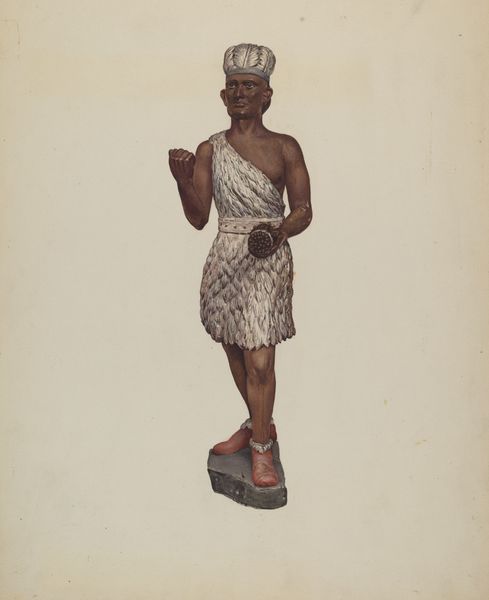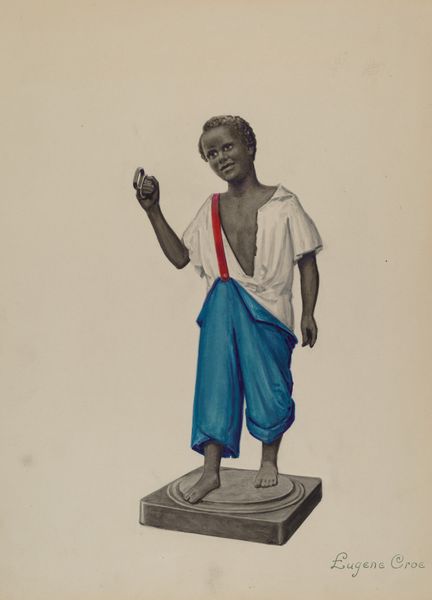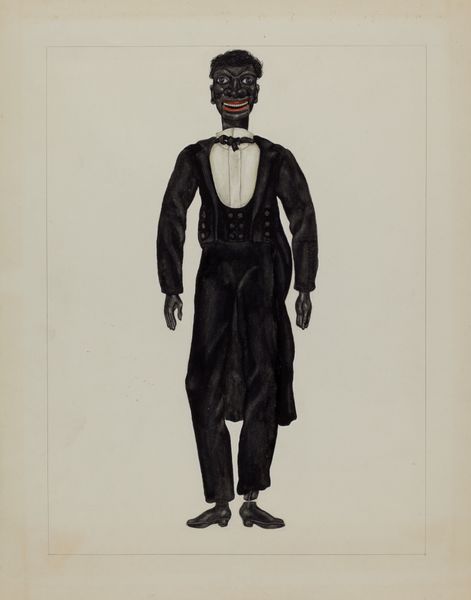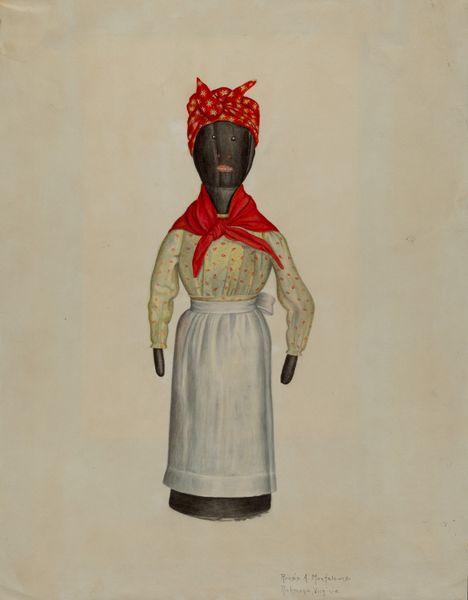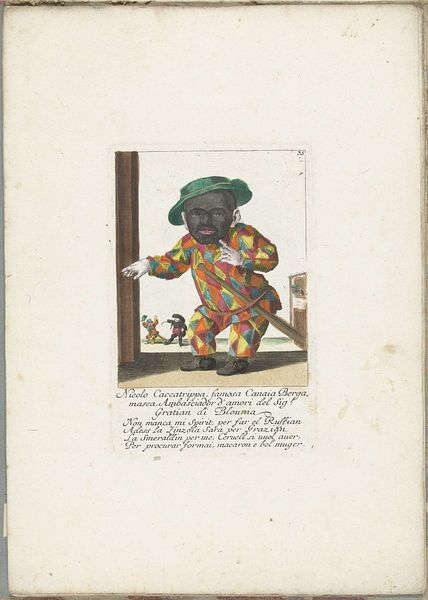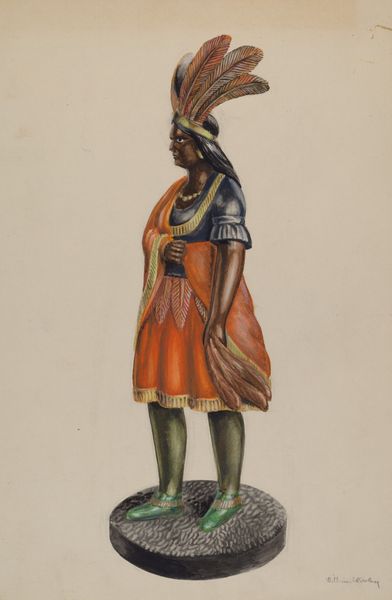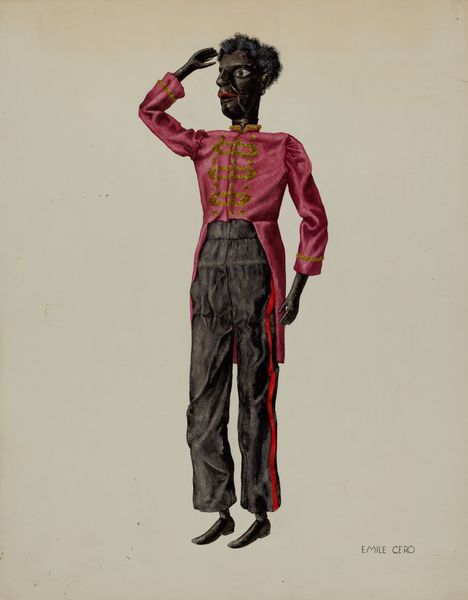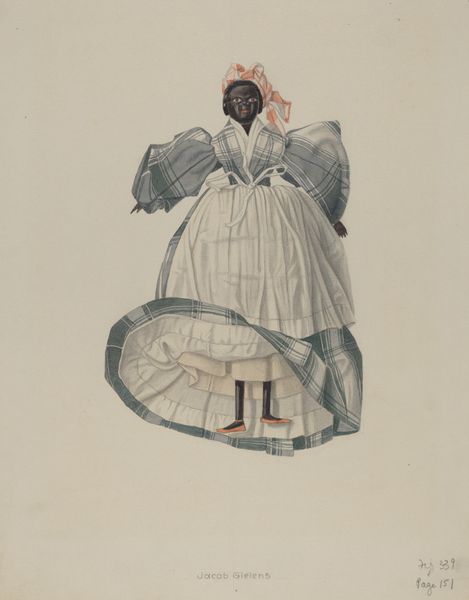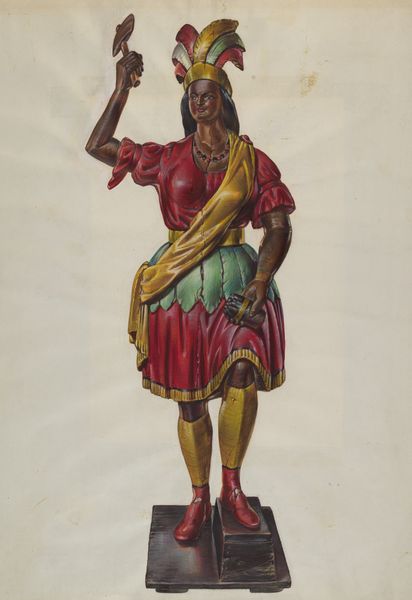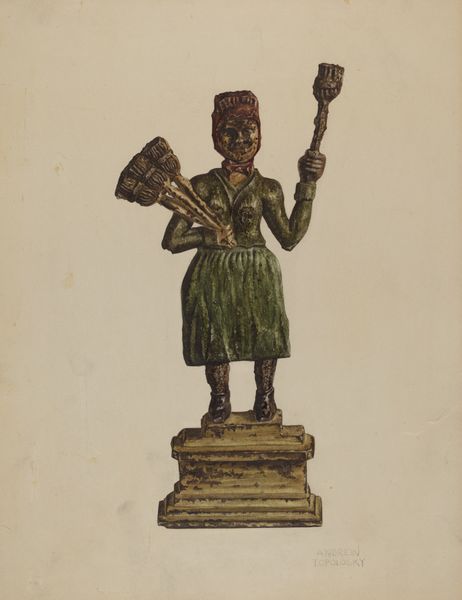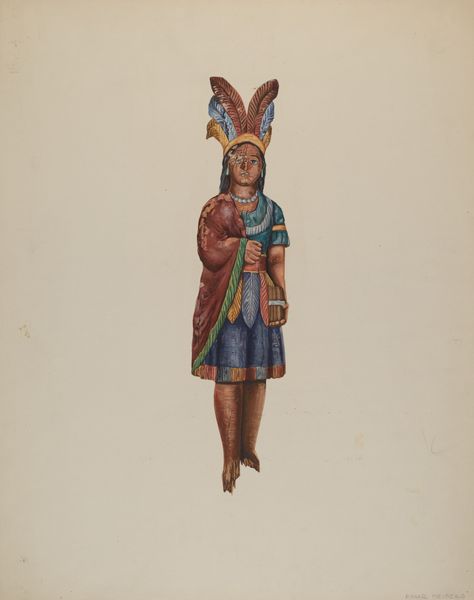
drawing, painting, watercolor
#
portrait
#
drawing
#
water colours
#
painting
#
figuration
#
watercolor
#
genre-painting
#
watercolor
Dimensions: overall: 30.5 x 21.5 cm (12 x 8 7/16 in.) Original IAD Object: 5 3/4" high; 3" wide; 2" thick
Copyright: National Gallery of Art: CC0 1.0
Curator: Before us, we have "Negro Mammy Bank," a watercolor painting by Robert Clark, dating circa 1937. What strikes you first? Editor: Immediately, it’s the stillness, almost a stubbornness, in her pose. Arms crossed, a sort of 'I'm-not-budging' stance. The vibrant red polka-dot headscarf contrasts so starkly with the somber hues everywhere else...it's quite striking. Curator: It's interesting you notice that tension. Visually, these "Mammy" figures were quite prevalent; often depicting black women in domestic roles. Do you see symbolic weight in the representation? Editor: The figure’s outfit screams “domestic worker,” certainly. The pristine white apron seems at odds with her sturdy, almost confrontational posture, no? There is a potent paradox here; it could be said that it embodies the history of exploitation while subtly acknowledging a resilience… the endurance beneath the stereotype, a whisper of autonomy? Curator: Indeed. Consider the medium as well—watercolor can often lend itself to fleeting impressions, but Clark employs it with precision here. Does the application offer any insight for you? Editor: Yes, there’s something carefully rendered about it; those crisp edges! The color palette gives me pause. The deep blues seem so unnatural in their intensity. It certainly hints at an unease… I'd say it's no mere documentary piece. It's fraught with layers! The title too carries such weight… so overt, so matter-of-fact...it almost feels like a challenge. Curator: Precisely. The naming itself almost seems ironic when paired with the other layers we are unveiling. So, reflecting back on your initial response—that first visceral reaction to the stillness and stance, do you still hold the same perspective now that we have had this dialogue? Editor: I do. More than ever! To witness that level of complex personhood struggling within such a reduced visual symbol speaks of the artist’s own struggle and sensitivity; despite its obvious historical discomfort, there remains a certain profound intimacy. It’s that flicker beneath the surface that ultimately haunts. Curator: I concur, that underlying intimacy that is hard to overlook is where I end, it's like seeing resilience hiding in plain sight, wouldn't you agree?
Comments
No comments
Be the first to comment and join the conversation on the ultimate creative platform.
